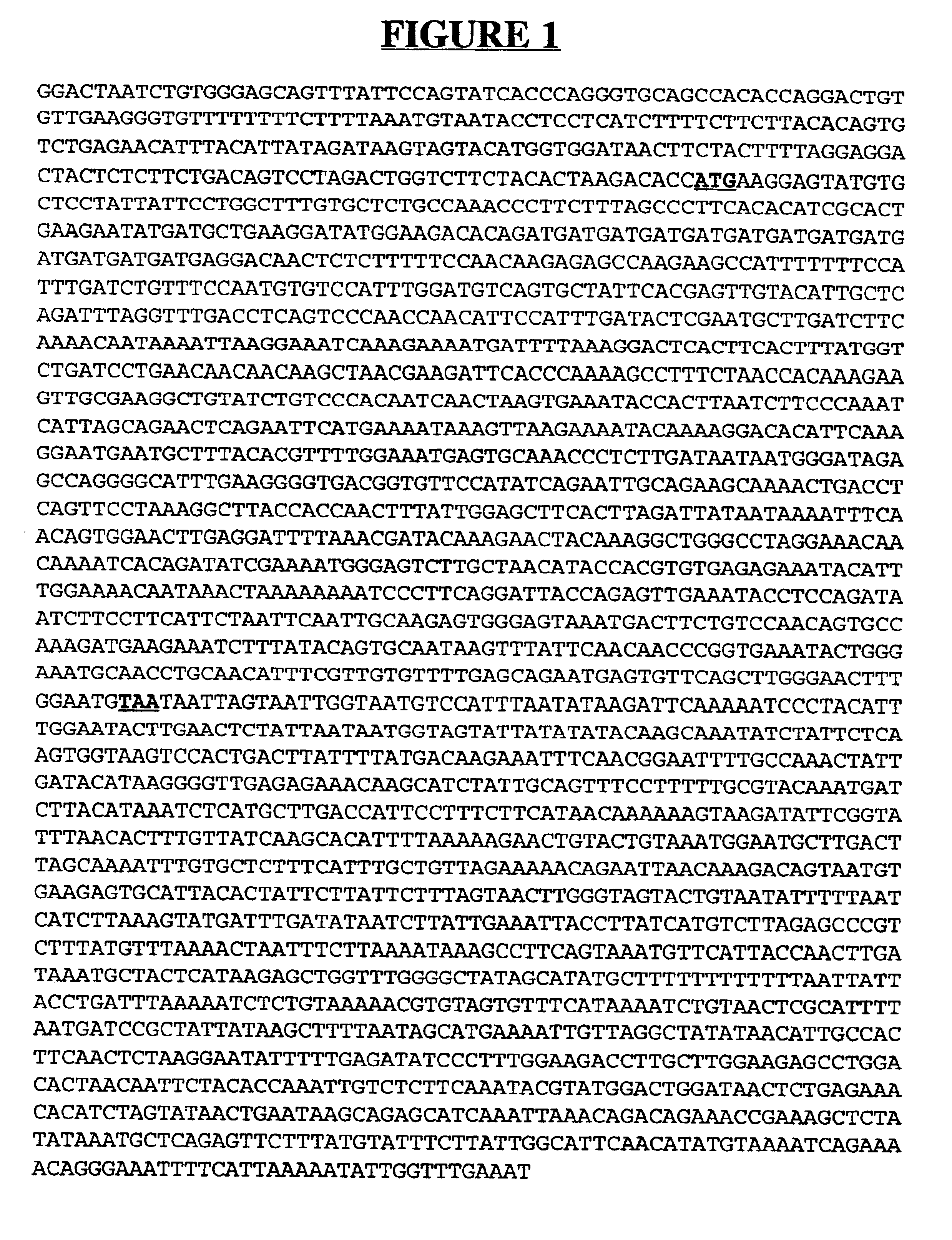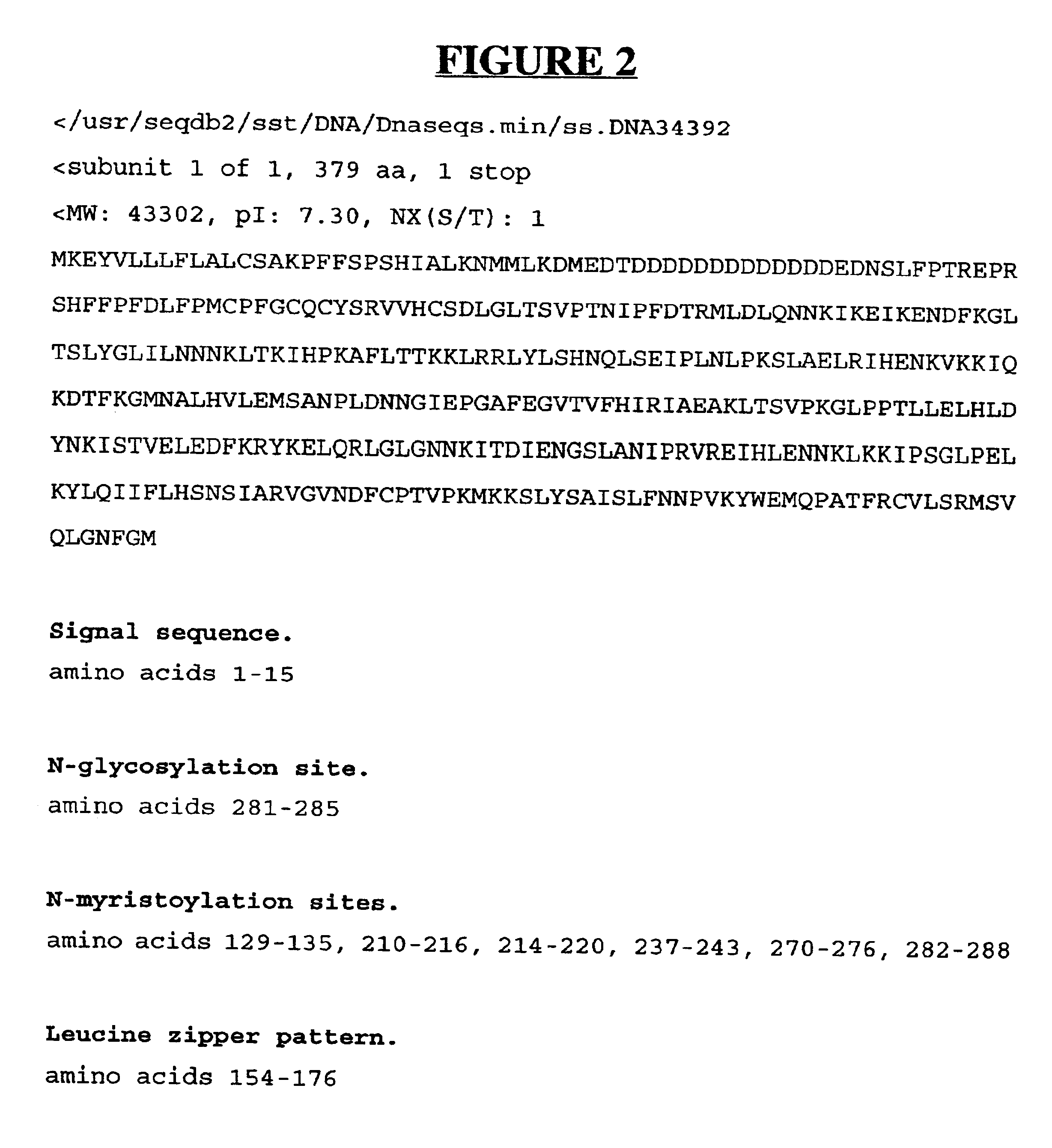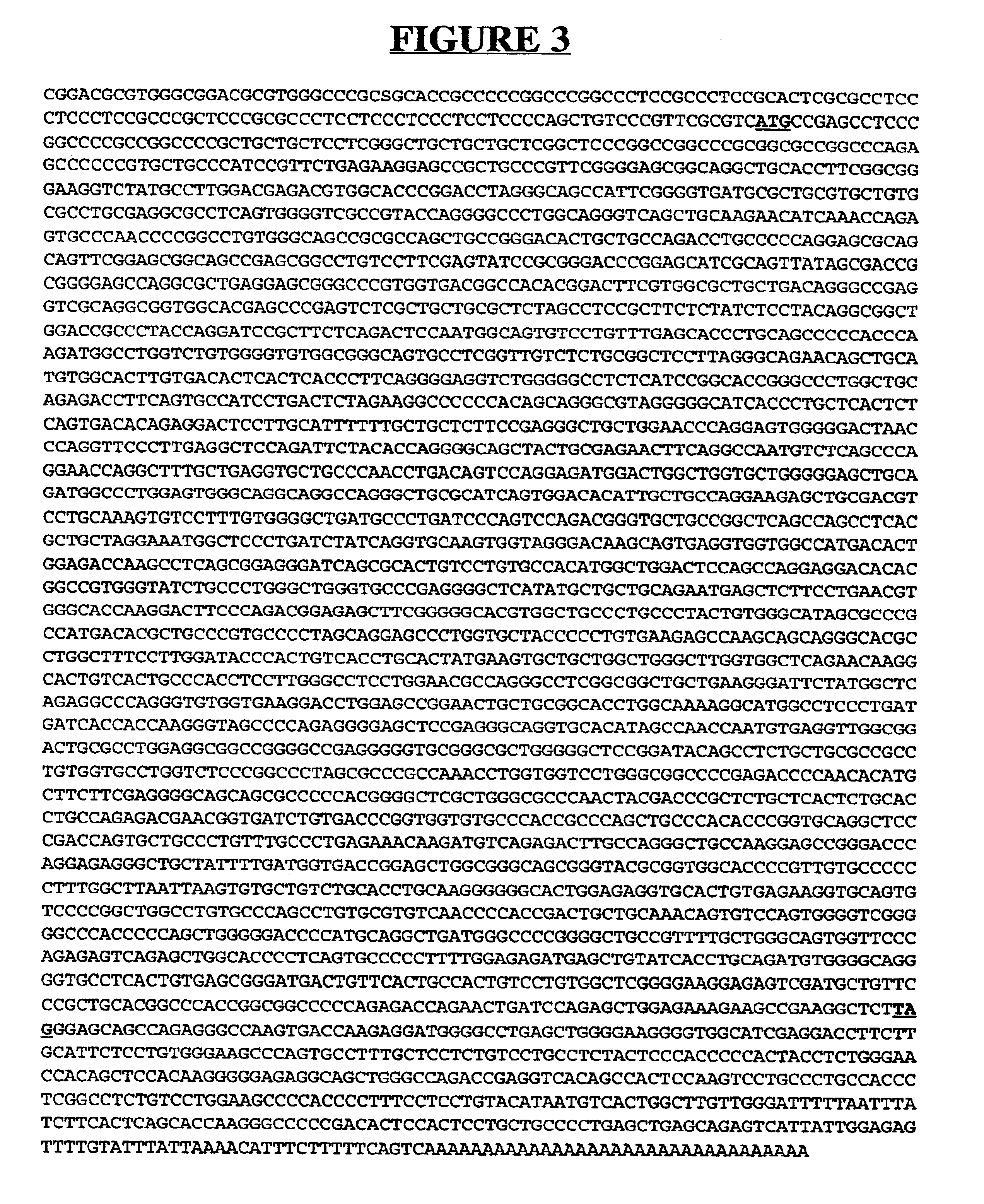Secreted and transmembrane polypeptides and nucleic acids encoding the same
a technology of nucleic acids and polypeptides, applied in the field of secreted and transmembrane polypeptides and nucleic acids encoding the same, can solve the problems of ischaemia, reperfusion, cardiac injury,
- Summary
- Abstract
- Description
- Claims
- Application Information
AI Technical Summary
Problems solved by technology
Method used
Image
Examples
example 1
Extracellular Domain Homology Screening to Identify Novel PolyWentides and cDNA Encoding Therefor
[0410]The extracellular domain (ECD) sequences (including the secretion signal sequence, if any) from about 950 known secreted proteins from the Swiss-Prot public database were used to search EST databases. The EST databases included public databases (e.g., Dayhoff, GenBank), and proprietary databases (e.g. LIFESEQ™, Incyte Pharmaceuticals, Palo Alto, Calif.). The search was performed using the computer program BLAST or BLAST-2 (Altschul et al., Methods in Enzymolopy 266:460-480 (1996)) as a comparison of the ECD protein sequences to a 6 frame translation of the EST sequences. Those comparisons with a BLAST score of 70 (or in some cases 90) or greater that did not encode known proteins were clustered and assembled into consensus DNA sequences with the program “phrap” (Phil Green, University of Washington, Seattle, Wash.).
[0411]Using this extracellular domain homology screen, consensus DN...
example 2
Isolation of cDNA clones by Amylase Screening
[0414]1. Preparation of Oligo dT Primed cDNA Library
[0415]mRNA was isolated from a human tissue of interest using reagents and protocols from Invitrogen, San Diego, Calif. (Fast Track 2). This RNA was used to generate an oligo dT primed cDNA library in the vector pRK5D using reagents and protocols from Life Technologies, Gaithersburg, Md. (Super Script Plasmid System). In this procedure, the double stranded cDNA was sized to greater than 1000 bp and the SalI / NotI linkered cDNA was cloned into XhoI / NotI cleaved vector. pRK5D is a cloning vector that has an sp6 transcription initiation site followed by an SfiI restriction enzyme site preceding the XhoI / NotI cDNA cloning sites.
[0416]2. Preparation of random primed cDNA library
[0417]A secondary cDNA library was generated in order to preferentially represent the 5′ ends of the primary cDNA clones. Sp6 RNA was generated from the primary library (described above), and this RNA was used to genera...
example 3
Isolation of cDNA Clones Encoding Human PRO241
[0437]A consensus DNA sequence was assembled relative to other EST sequences as described in Example 1 above. This consensus sequence is herein designated DNA30876. Based on the DNA30876 consensus sequence, oligonucleotides were synthesized: 1) to identify by PCR a cDNA library that contained the sequence of interest, and 2) for use as probes to isolate a clone of the full-length coding sequence for PRO241.
[0438]PCR primers (forward and reverse) were synthesized:
[0439]
forward PCR primer5′-GGAAATGAGTGCAAACCCTC-3′(SEQ ID NO:3)reverse PCR primer5′-TCCCAAGCTGAACACTCATTCTGC-3′(SEQ ID NO:4)
Additionally, a synthetic oligonucleotide hybridization probe was constructed from the consensus DNA30876 sequence which had the following nucleotide sequence hybridization probe
[0440]
hybridization probe5′-GGGTGACGGTGTTCCATATCAGAATTGCAGAAGCAAAACTGACCTCAGTT-3′(SEQ ID NO:5)
[0441]In order to screen several libraries for a source of a full-length clone, DNA from...
PUM
| Property | Measurement | Unit |
|---|---|---|
| temperature | aaaaa | aaaaa |
| v/v | aaaaa | aaaaa |
| pH | aaaaa | aaaaa |
Abstract
Description
Claims
Application Information
 Login to View More
Login to View More - R&D
- Intellectual Property
- Life Sciences
- Materials
- Tech Scout
- Unparalleled Data Quality
- Higher Quality Content
- 60% Fewer Hallucinations
Browse by: Latest US Patents, China's latest patents, Technical Efficacy Thesaurus, Application Domain, Technology Topic, Popular Technical Reports.
© 2025 PatSnap. All rights reserved.Legal|Privacy policy|Modern Slavery Act Transparency Statement|Sitemap|About US| Contact US: help@patsnap.com



